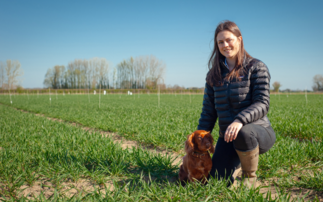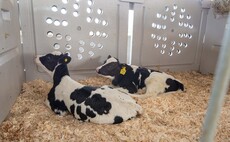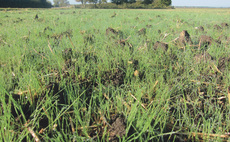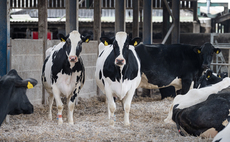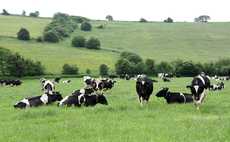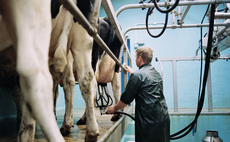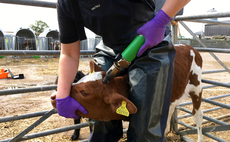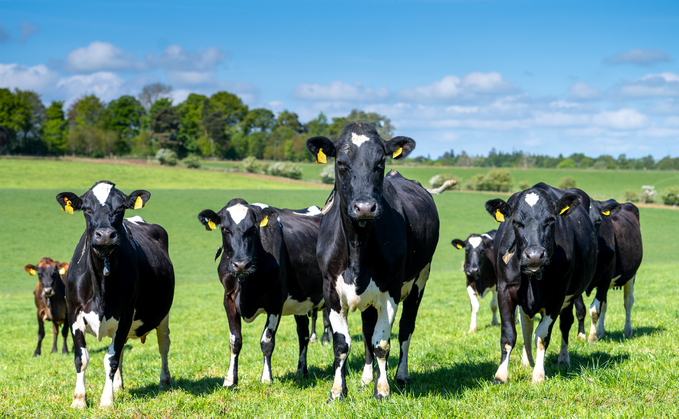
Dr James Breen says: "Managing udder health is an ongoing process and is best viewed as part of herd management, helping to optimise cow health, well-being, productivity and longevity.
"The days of a reactive approach, administering antibiotics when cases arose without, then reviewing patterns in new cases ought to be behind us."
With pressure from many external sources to reduce antibiotic use on-farm, many farmers now favour selective antibiotic dry cow therapy (SDCT) and are also interested in how clinical cases during lactation are treated.
What does cure look like?
"How do we measure a cure? And how can attaining a good cure help in preventing further cases in a lactation?" Dr Breen asks.
Good record keeping will help track cases of clinical mastitis for each cow, as well as identifying when in a lactation an infection was first seen. Supported with testing, be that cow-side tests or lab testing, likely pathogens can be identified.
Dr Breen says: "Armed with the information, your vet will be able to spot any trends, recurring infections and candidates unlikely to achieve a cure which may need to be removed from the herd.
"The first and probably most important question to ask on identifying a case of clinical mastitis ought to be ‘is this the first event for this cow in this lactation?' and, if it is, treat it rapidly with the aim of achieving a full cure
"It is best to avoid leaving it for a few days until visible clots clear up, as this approach may lead to more cases in that same lactation.
"And treat with a full course of antibiotics as prescribed by your vet to deliver a good cure. Work has shown that this approach can achieve 50-60% cure rates specifically for these first events and go on to reduce subsequent cases."
Mastitis
Should second, third or even fourth cases of mastitis occur during a cow's lactation, the chances of achieving a good cure decline with each case.
"It is important to understand the difference between clinical mastitis and a high cell count cow, with clinical being when you see visible signs of that infection and a high cell count cow having an infection but no symptoms.
"Reviewing your approach to the first clinical mastitis cases is an important step to ensure the chance of a recurrent case is reduced.
"While we achieve a good cure, we also work to reduce the rate of first clinical cases by understanding likely sources of infection."
An advocate of the role of data and evidence, Dr Breen recommends that even if cow-side tests are routinely and successfully used, mastitis samples should be stored and sent to an independent lab a couple of times a year, just to check that testing is running as it should be.
Available data
By working closely with your vet and reviewing all the available mastitis-related data, there are some key questions which can be answered, which will help with decision-making.
From where does infection most commonly originate – in lactation or during the dry period? What are the main problem pathogens?
When in lactation do first clinical cases typically occur? If less than 30 days in milk, dry period infections are the likely cause.
Cell counts
How do cell counts change during lactation and across the dry period?
Dr Breen says: "Dry cow management will need to be scrutinised with everything from cell counts to teat sealant and dry cow tubes, infusion technique, dry cow pen hygiene all having potential to impact on mastitis cases.
"Getting regular veterinary input to understand the mastitis challenges on your farm will really help.
"Ensuring you keep good records and that these are routinely scrutinised provides vital information on which to base treatment protocols.
"Achieving a high cure rate for the first clinical case and preventing as many first cases as we can through understanding sources of infection will reduce overall antibiotic use, something the UK dairy sector is striving for."
Internal teat sealants
Internal teat sealants have been increasingly used at drying off since work was published in 2018, outlining their role in udder health management as many producers looked for alternatives to antibiotic dry cow tubes. Since then, SDCT has become the norm on many farms.
The benefits of internal teat sealants for cows at drying off are well established; the reduced risk of new infections during the dry period results in fewer cases of mastitis in early lactation.
For some time now, mastitis experts have recommended teat sealants for every cow, every dry period.
Ubroseal Blue is the only blue teat sealant available in the UK; blue teat sealants have been popular for some time in other countries, such as the USA, and farmers find them easier to see, with no reduction in efficacy.
The blue colour can help you to be confident of best practice when it comes to teat sealant administration and removal.
Key Points
- Clinical mastitis case data is fundamental for monitoring the cure rate for treatment plans
- Cow-side or lab testing to identify problem pathogens provides good information for antibiotic prescribing
- The first clinical case of mastitis in lactation is the best chance to obtain a good cure
- Cure rates of 50-50% for first clinical cases in a lactation help reduce the likelihood of further cases









